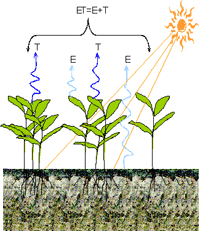Agricultural Research Division of IANR

West Central Research and Extension Center, North Platte
Date of this Version
2009
Abstract
Plant community functional composition can be manipulated in restored ecosystems to reduce the establishment potential of invading species. This study was designed to compare invasion resistance among communities with species functionally similar or dissimilar to yellow starthistle (Centaurea solstitialis), a late-season annual. A field experiment was conducted in the Central Valley of California with six experimental plant communities that included (1) six early-season native annual forbs (AF); (2) five late-season native perennials and one summer annual forb (NP); (3) a combination of three early-season native annual forbs and three late-season native perennials (FP); (4) six early-season non-native annual grasses (AG); (5) monoculture of the late-season native perennial grass Elymus glaucus (EG); and (6) monoculture of the late-season native perennial Grindelia camporum (GC). Following establishment, C. solstitialis seed was added to half of the plots, and a monoculture of C. solstitialis (CS) was established as a control. Over a 5-year period, the AF and AG communities were ineffective at preventing C. solstitialis invasion. Centaurea solstitialis cover remained less than 10% in the FP and NP communities, except in year 1. By the fourth year, E. glaucus cover was greater than 50% in NP and FP communities and had spread to all other communities (e.g., 27% cover in CS in year 5). Communities containing E. glaucus, which is functionally similar to C. solstitialis, better resisted invasion than communities lacking a functional analog. In contrast, G. camporum, which is also functionally similar to C. solstitialis, failed to survive. Consequently, species selection for restored communities must consider not only functional similarity to the invader but also establishment success, competitiveness, and survivorship.


Comments
Published in Restoration Ecology 17:6 (2009), pp.884-892; doi 10.1111/j.1526-100X.2008.00448.x Copyright © 2009 Society for Ecological Restoration International; published by Wiley-Blackwell. Used by permission.